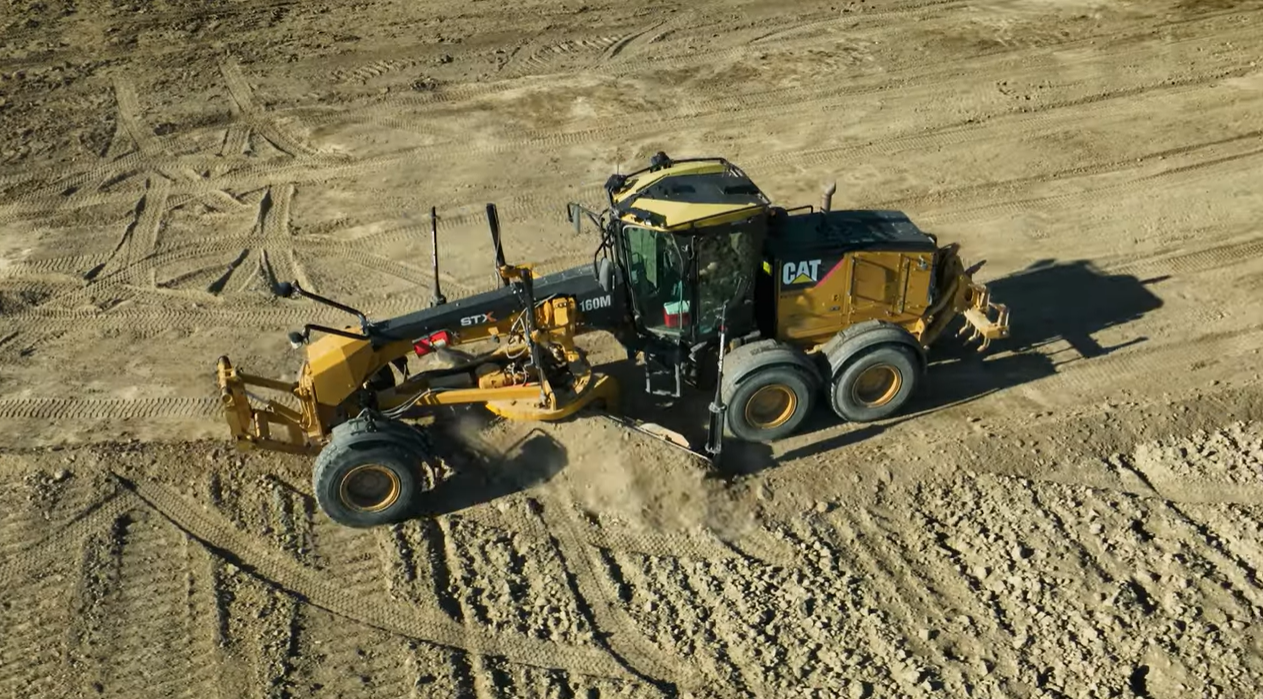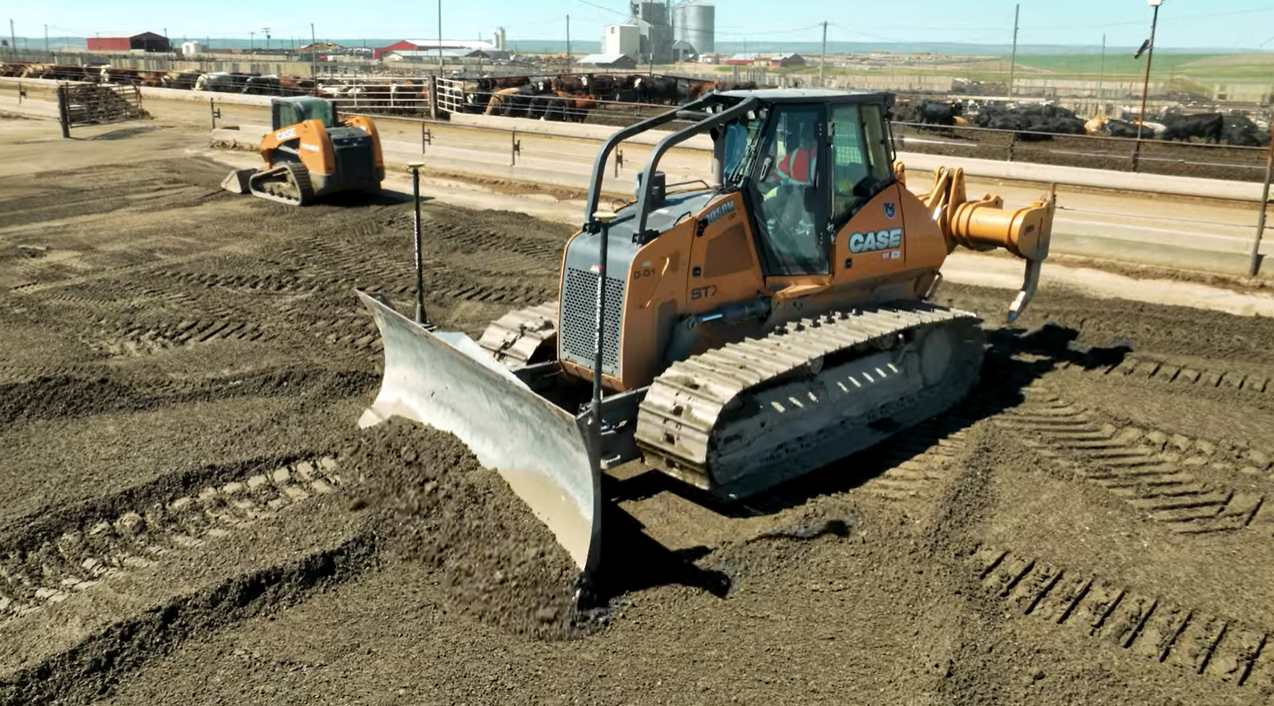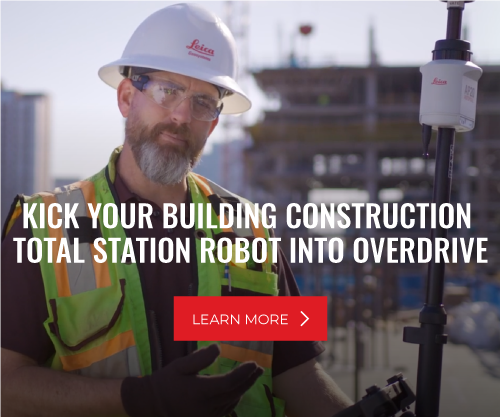When it comes to construction projects, precision matters.
A poorly graded road that doesn’t drain properly can lead to costly premature cracking and potholes.
On airport runways, millimeter-level accuracy is crucial for achieving the surface quality necessary for safe operation of runways and taxiways.
On athletic fields, precision grade control, using GPS technology, can enhance player safety, ensure reliable drainage, and increase playability.
The precision that machine control technology delivers really matters.

According to Ryan Baumbach, technical services specialist at Spatial Technologies, a Leica technology dealer serving Western Canada, increased accuracy in grading achieved through machine control has extended to other types of construction projects as well.
“In pipeline construction, contractors would typically eyeball a lot of things, throw pipe in the ground and it would be good enough,” says Baumbach. “Now there are many regulations and different laws that require tighter specs.”
But centimeter-level accuracy isn’t the only reason why use of 3D machine control systems is on the rise. Contractors can save time, fuel and money with this technology.
Time Savings
There are many ways machine control can save contractors’ time. The most obvious is that using GPS guidance enables operators to achieve the desired grade with fewer passes and in less operating time.
Additionally, contractors don’t have to wait for surveyors to check their work as they would with manual staking.
“I think the biggest factor is that jobs using machine control are completed on schedule or ahead of schedule, with no mistakes,” says Richard Andrews, vice president of Spatial Technologies.

The experts at Special Technologies understand that the amount of time savings will vary based on the size of the job and the project. However, overall, they believe it’s at least 25% faster.
There’s another bonus. “Finishing faster frees up time to work on more projects, so you can generate even more revenue,” Baumbach says.
Fuel & Labor Savings
For heavy earthmoving contractors, fuel expenses can represent 30% to 50% or more of a machine’s total operating cost.
“Whenever that machine’s running, it’s burning fuel, and you have an operator that you’re paying,” adds Andrews. “With machine control, you can reduce both fuel and labor costs by reducing the amount of time spent in the machine.”
It’s the same with maintenance costs. Fewer hours means less wear and tear on the machine and lower costs.
“Every hour a machine runs, it depreciates that machine. Fewer hours are good, as long as contractors are getting the same amount of revenue,” Andrews says.

Of course, machine control comes at a cost. However, according to Andrews, proving ROI isn’t as necessary as it once was because in Western Canada, it’s not uncommon to see machine control on virtually every jobsite.
“Some of the bigger contractors have 20 or 30 systems,” he says. “If it wasn’t making them money, then they wouldn’t continually buy new machine control and add to their fleet. They know it’s a money-maker for them.”
Baumbach believes even smaller contractors can benefit from machine control, simply because it offers so much savings, and lasts so long.
“We work with one contractor who had the same machine control on their dozers for more than 10 years,” he says. “Aside from the cables or small things that you have to replace over the life of the machine, it’s not like the equipment expires.”
Machine Control Helps Solve Skilled Labor Challenges
There’s another way machine control is helping contractors, and that is by allowing novice operators get up to speed.
In the U.S. construction workforce, shortages are the leading cause of project delays as new immigration enforcement efforts have impacted nearly one-third of construction firms, according to a workforce survey conducted by the Associated General Contractors of America and NCCER in August 2025.
Ninety-two percent of construction firms report having a hard time finding workers to hire, and 45% say labor shortages are causing project delays. Skilled heavy equipment operators are in high demand.

“Leica machine control will take a rookie operator and make him look like he’s got 10 years’ experience,” says Cletus Young, manager of Machine Control and Construction Positioning for Spatial Technologies. “Some of the older guys say, ‘I don’t need it,” but once they start operating it and see how efficient it is, they change their tune.
Precision in the form of machine control truly does matter.
First, it benefits clients who enjoy longer-lasting and safer projects.
Second, it benefits project managers who can more easily get jobs completed on time and without rework.
And third, it benefits business owners who can put more on their bottom line with every job.






